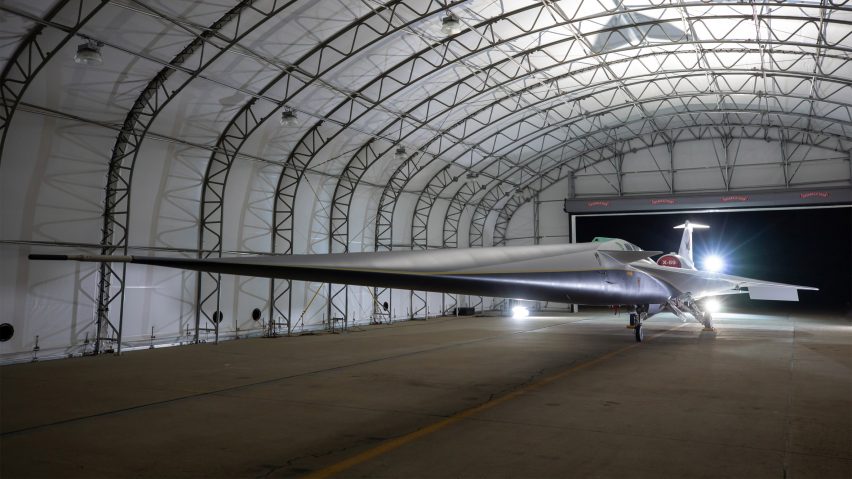
NASA and Lockheed Martin unveil "quiet supersonic" jet
Space agency NASA and aerospace company Lockheed Martin have presented their experimental X-59 supersonic jet, which has a form designed to reduce the loudness of a sonic boom.
According to the companies, the experimental aircraft was "designed to quiet the sonic boom" and marks a "significant milestone" in the decades-long research project aimed at resolving noise challenges associated with supersonic flight.
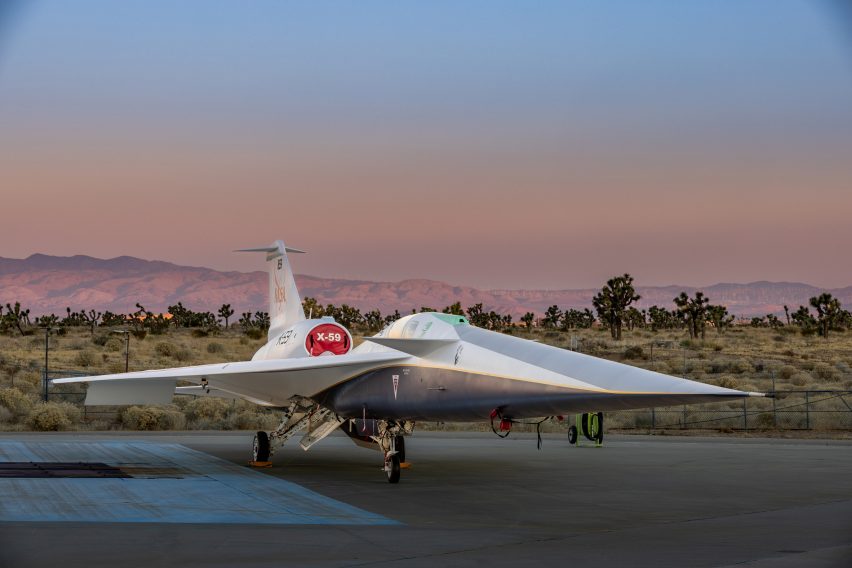
The aircraft, which has a cruising speed of 925 miles per hour, was presented for the first time last month by Lockheed Martin's advanced development division Skunk Works.
"Lockheed Martin Skunk Works rolled out the X-59, a unique experimental aircraft designed to quiet the sonic boom, at a ceremony in Palmdale, California," said the company.
"The ceremony marked a significant milestone in Lockheed Martin and NASA's decades-long journey to solve one of the most persistent challenges of supersonic flight – the sonic boom."
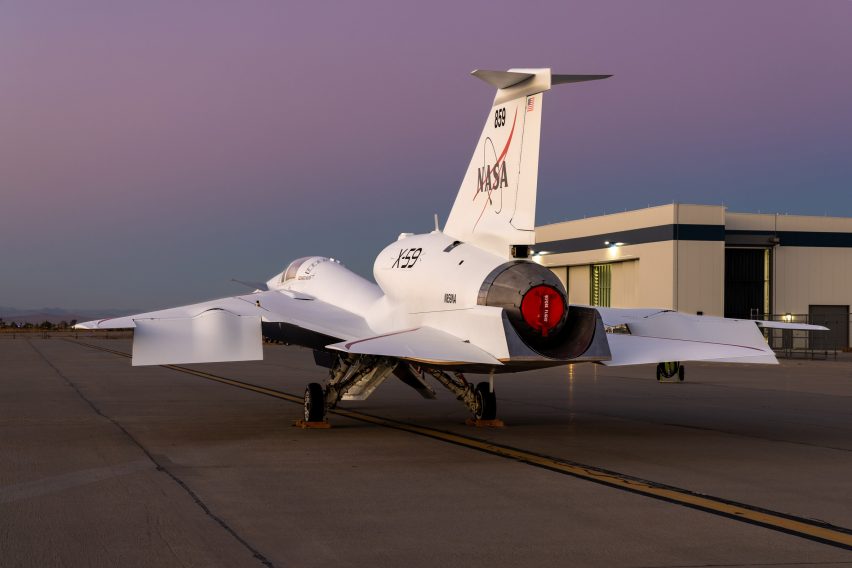
The 30.3-metre-long (99.7-feet) aircraft was designed to reduce the shockwaves and noise created when the sound barrier is broken – known as a sonic boom.
NASA and Lockheed Martin made the X-59 with a long tapered nose designed to separate the shock waves that cause sonic booms, thereby reducing the potential sound and damage risks associated with other supersonic aircraft models.
This design means that the cockpit, which has no front-facing windows and instead utilises high-resolution cameras that feed 4K monitors, is located almost halfway down the length of the aircraft.
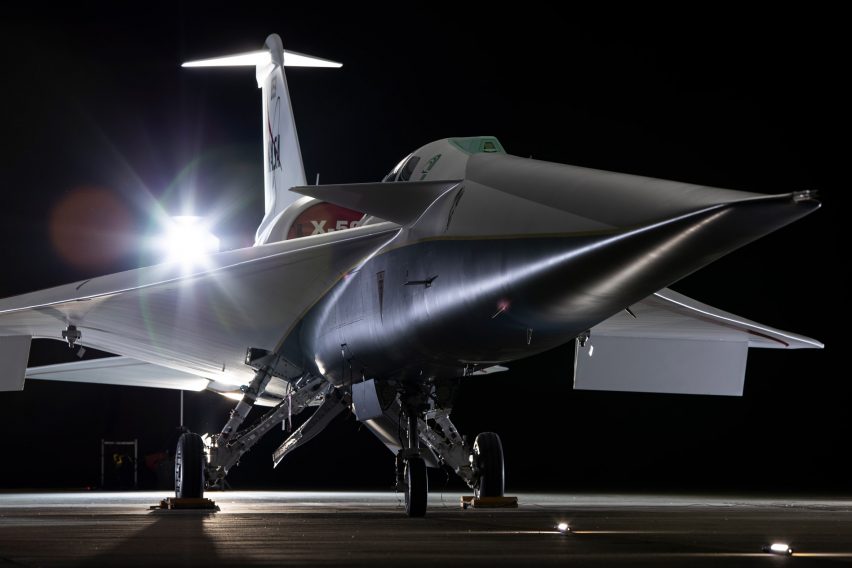
The X-59 will now undergo a series of ground tests before completing its first flight later this year followed by acoustic tests.
The companies hope that the research and technologies developed for the X-59 may be used to inform future designs of commercial supersonic aircraft.
"[The acoustic phase] will include flights over populated areas to provide US and international regulators with statistically valid data required to help approve new rules that could allow quiet commercial supersonic flight over land," the companies stated.
"This would cut commercial flight times to half of what they are today, transforming travel for people around the world."
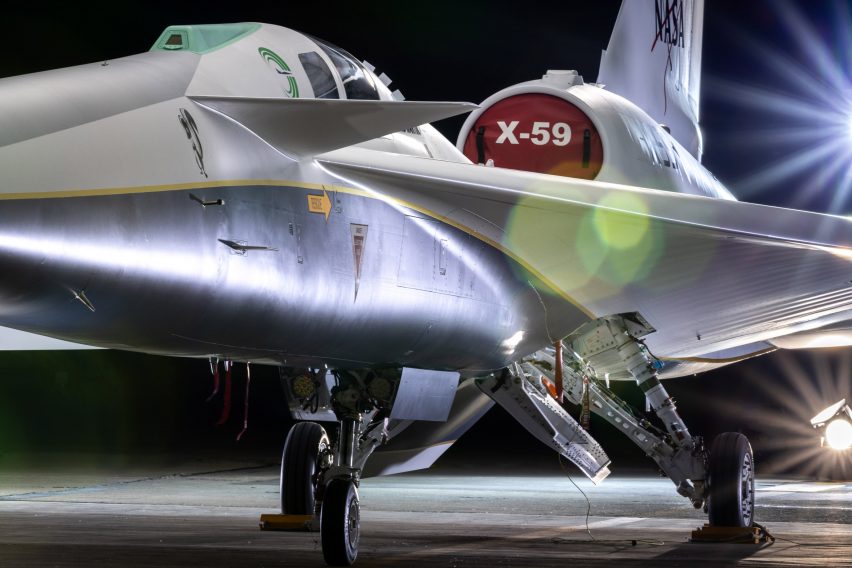
"We're thrilled to take on this challenge alongside NASA, whose quiet supersonic technology mission will have lasting, transformational impacts for people around the world," said Lockheed Martin Skunk Works vice president John Clark.
"This project is just one example of the broader ingenuity of our industry as we continually strive to push the envelope of what's possible."
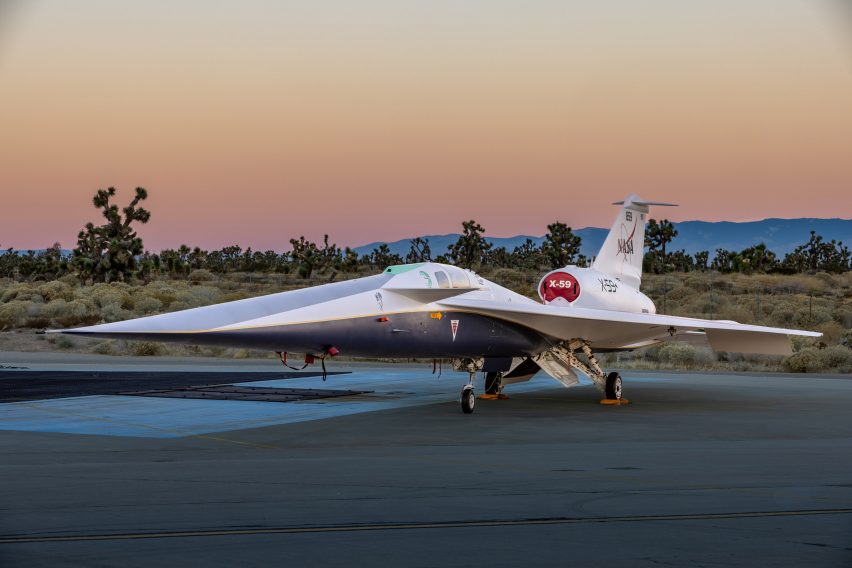
The X-59 is the latest supersonic aircraft – an aircraft that can travel above Mach 1.
The first supersonic aircraft was the rocket-powered Bell X-1, flown in 1947. Later in 1973, manufacturers in Britain and France developed the Concorde, the first supersonic commercial plane. Travelling at Mach 2.04, the Concorde became a regular commercial route from 1976 before its service was stopped in 2003.
Other projects recently completed by NASA include using AI to design hardware that is three times better in performance and funding ICON to develop lunar 3D-printing construction technology.
Lockheed Martin also previously partnered with tyre-maker Goodyear and car manufacturer General Motors to design airless tyres for NASA's next lunar landing.
The photography is by Garry Tice and Michael Jackson.